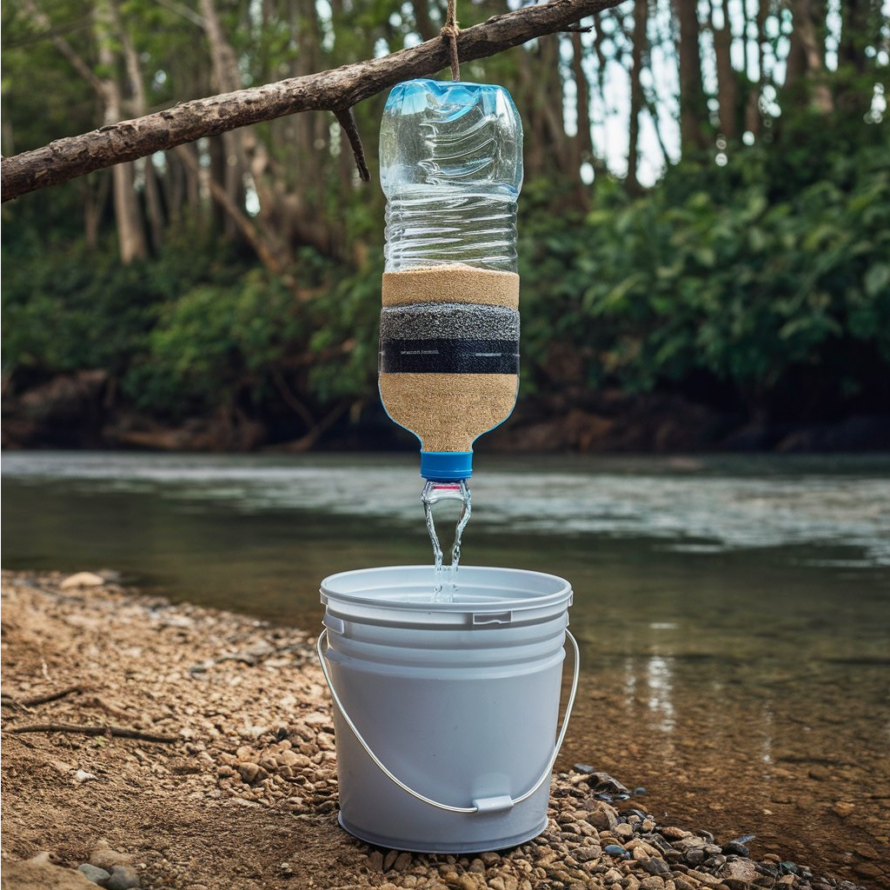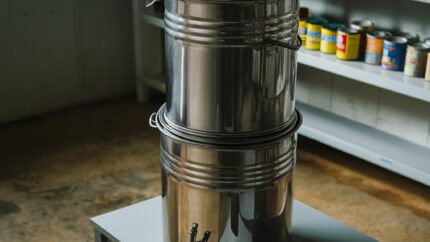There are times, especially in a survival situation, when you have to get creative with the resources at hand. Improvised filtration is one such method where you can use natural materials to build a basic filter that can help clean water and make it safer to drink. While it may not be as effective as commercial filters, it’s a valuable skill that can make a big difference when no other options are available.
The basic idea behind improvised filtration is to create a filter using layers of different materials that can remove sediments and some pathogens from the water. Common materials include sand, gravel, and charcoal. Here’s a simple way to construct an improvised water filter using a plastic bottle or a similar container:
- Prepare the Container: Cut the bottom off a plastic bottle and poke a small hole in the cap for water to drip through. If you don’t have a bottle, any similar container with one end open will work.
- Layer the Materials: Start by placing a piece of cloth or a coffee filter at the bottom (where the cap is) to prevent the materials from falling out. Then, add a layer of fine sand, followed by a layer of coarse sand or small gravel. On top of this, add a layer of activated charcoal if you have it. Finally, add another layer of coarse sand or small gravel and top it off with fine sand.
- Filter the Water: Pour the contaminated water into the top of the filter and let it slowly pass through the layers. The different materials will help trap particles and some pathogens, resulting in clearer, safer water at the bottom.
This method leverages the filtering properties of each material. The sand and gravel layers trap larger particles and sediments, while the charcoal layer adsorbs some chemical contaminants and improves the taste of the water. While this filter won’t remove all pathogens, it can significantly improve the clarity and safety of the water, especially if followed by another purification method like boiling or chemical treatment.
One of the biggest advantages of improvised filtration is that it uses natural, readily available materials. This makes it an excellent option when you have limited resources or are far from any commercial filtration systems. It’s also a versatile method that can be adapted to different container sizes and materials, making it a useful skill for various survival scenarios.
However, there are some limitations to keep in mind. Improvised filters are generally less effective at removing pathogens compared to commercial filters. They are also labor-intensive to construct and maintain, requiring regular cleaning and replacement of materials to stay effective. Additionally, this method does not remove chemical contaminants as effectively as activated charcoal or commercial filters, so it’s best used in conjunction with other purification methods.
Here are some tips for using improvised filtration effectively.
- Always pre-filter water through a cloth to remove large debris and sediments before using the improvised filter.
- Replace the filtering materials regularly, especially the sand and charcoal layers, to maintain the filter’s effectiveness.
- If possible, combine the improvised filter with boiling or chemical purification methods to ensure the water is safe to drink.
- Practice building an improvised filter before you need it, so you’re familiar with the process and materials required.
Improvised filtration has been used in various survival scenarios with great success. For instance, during natural disasters when access to clean water is limited, people have relied on makeshift filters to treat water from natural sources like rivers and lakes. These filters have helped prevent waterborne illnesses by providing a simple yet effective way to reduce contaminants.
It offers a practical solution for purifying water using natural materials, making it accessible in almost any environment. While it has its limitations, particularly in pathogen removal, it can significantly improve water quality and safety when no other options are available. By combining this method with other purification techniques, you can ensure you have access to cleaner, safer drinking water in any survival situation.

